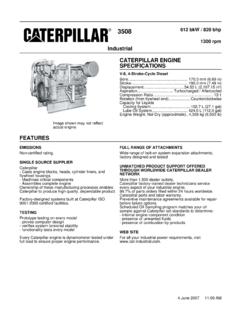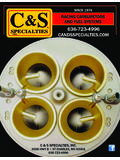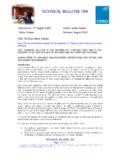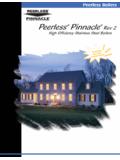Transcription of 7. Turbine-Generator
1 GGE Power SystemsTurbine-GeneratorPage Specifications91638G1 (03/01) Rev. 0 er7. Gas turbine SystemsThe MS7001(EA) gas turbine has a single shaft, bolted rotor with thegenerator connected to the gas turbine at the turbine or hot end. Majorcomponents of the MS7001(EA) are described Compressor SectionThe axial flow compressor has 17 stages with modulating inlet guide vanesand provides a to 1 pressure ratio. Interstage air extraction is used forcooling and sealing air for turbine nozzles, wheelspaces, and bearings, and forsurge control during start Compressor RotorThe compressor rotor consists of a forward stub shaft with the 1st stage rotorblades, a fifteen blade and wheel assembly for stages 2 to 16, and an aft stubshaft with the stage 17 rotor blades.
2 Rotor blades are inserted into broachedslots located around the periphery of each wheel and wheel portion of the stubshaft. The rotor assembly is held together by fifteen axial bolts around thebolting circle. The wheels are positioned radially by a rabbeted fit near thecenter of the discs. Transmission of torque is accomplished by face friction atthe bolting positioning of the wheels is made during assembly to reduce therotor balance correction. The compressor rotor is dynamically balanced afterassembly and again after the compressor and turbine rotors are mated. Theyare precision balanced prior to assembly into the Compressor Blade DesignThe airfoil shaped compressor rotor blades are designed to compress airefficiently at high blade tip velocities. These forged blades are attached totheir wheels by dovetail connections.
3 The dovetail is accurately machined tomaintain each blade in the desired location on the blades in the first two stages of the compressor are Carpenter 450, amartenistic stainless steel with superior strength and corrosion resistance,which does not require a Specifications91638G1 (03/01) Rev. 0 erStator blades utilize square bases for mounting in the casing slots. Bladestages zero through four are mounted by axial dovetails into blade ringsegments. The blade ring segments are inserted into circumferential grooves inthe casing and are secured with locking Compressor StatorThe casing is composed of three major subassemblies: the inlet casing, thecompressor casing, and the compressor discharge casing. These components inconjunction with the turbine shell, exhaust frame/diffuser, and combustionwrapper form the compressor casing bore is maintained to close tolerances with respect to the rotorblade tips for maximum aerodynamic efficiency.
4 Borescope ports are locatedthroughout the machine for component inspection. In addition all casings arehorizontally split for ease of handling and Inlet CasingThe primary function of the inlet casing, located at the forward end of the gasturbine, is to direct the air uniformly from the inlet plenum into thecompressor. The inlet casing also supports the number 1 radial bearing andthrust bearing assembly and the variable inlet guide vanes, located at the Compressor CasingThe compressor casing contains compressor stages 1 through 12. Extractionports in the casing allow bleeds to the exhaust plenum during start-up andextraction of air to cool the second and third stage Compressor Discharge CasingThe compressor discharge casing contains 13th- through 17th- stagecompressor stators and one row of exit guide vanes.
5 It also provides an innersupport for the first-stage turbine nozzle assembly and supports thecombustion components. Air is extracted from the compressor dischargeplenum to cool the stage one nozzle vane, retaining ring, and compressor discharge casing consists of two cylinders connected by radialstruts. The outer cylinder is a continuation of the compressor casing and theinner cylinder surrounds the compressor aft stub shaft. A diffuser is formed bythe tapered annulus between the outer and inner cylinders. The compressorTurbine-GeneratorPage Specifications91638G1 (03/01) Rev. 0 erdischarge casing is joined to the combustion wrapper at the flange on itsoutermost turbine SectionIn the three stage turbine section, energy from hot pressurized gas produced bythe compressor and combustion section is converted to mechanical turbine section is comprised of the combustion wrapper, turbine rotor, turbine shell, exhaust frame, exhaust diffuser, nozzles and diaphragms,stationary shrouds, and aft (number 3) bearing turbine RotorThe turbine rotor assembly consists of a forward shaft, three turbine wheels,two turbine spacer wheels, and an aft turbine shaft which includes the number3 journal bearing.
6 The forward shaft extends from the compressor rotor aftstub shaft flange to the first stage turbine wheel. Each turbine wheel is axiallyseparated from adjacent stage(s) with a spacer wheel. The spacer wheel faceshave radial slots for cooling air passages, and the outer surfaces are machinedto form labyrinth seals for interstage gas positioning of rotor members is performed during assembly tominimize balance corrections of the assembled rotor. Concentricity control isachieved with mating rabbets on the turbine wheels, spacers, and rotor components are held in compression by bolts. Rotor torque isaccomplished by friction force on the wheel faces due to bolt turbine rotor is cooled by air extracted from compressor stage 17. This airis also used to cool the turbine first- and second-stage buckets plus the rotorwheels and turbine Bucket DesignThe first-stage buckets use forced air convection cooling in which turbulent airflow is forced through integral cast-in serpentine passages and dischargedfrom holes at the tip of the trailing edge of the bucket.
7 Second-stage bucketsare cooled via radial holes drilled by a shaped tube electromechanicalmachining process. Third-stage buckets do not require air buckets are coated for corrosion protection. Second- and third-stage buckets have integral tip shrouds which interlock buckets to providevibration damping and seal teeth that reduce leakage flow. turbine buckets areattached to the wheel with fir tree dovetails that fit into matching cutouts atTurbine-GeneratorPage Specifications91638G1 (03/01) Rev. 0 erthe rim of the turbine wheel. Bucket vanes are connected to the dovetails byshanks which separate the wheel from the hot gases and thereby reduce thetemperature at the turbine rotor assembly is arranged to allow buckets to be replaced withouthaving to unstack the wheels, spacers and stub shaft assemblies.
8 Similarly,buckets are selectively positioned such that they can be replaced individuallyor in sets without having to rebalance the wheel turbine StatorThe turbine stator is comprised of the combustion wrapper, turbine shell, andthe exhaust frame. Like the compressor stator, the turbine stator is horizontallysplit for ease of handling and maintenance. (The aft diffuser is not split.) Combustion WrapperThe combustion wrapper, located between the compressor discharge casingand the turbine shell, facilitates removal and maintenance of the transitionpieces and stage one turbine ShellThe turbine shell provides internal support and axial and radial positions ofthe shrouds and nozzles relative to the turbine buckets. This positioning iscritical to gas turbine performance.
9 Borescope ports are provided forinspection of buckets and Exhaust FrameThe exhaust frame is bolted to the aft flange of the turbine shell and consistsof an outer and an inner cylinder interconnected by radial struts. The innercylinder supports the number 3 bearing. The tapered annulus between theouter and inner cylinders forms the axial exhaust diffuser. Gases from thethird stage turbine enter the diffuser where the velocity is reduced by diffusionand pressure is recovered, improving of the exhaust frame, number 3 bearing, and diffuser tunnel isaccomplished by off-base motor-driven Specifications91638G1 (03/01) Rev. 0 turbine Nozzle DesignThe turbine section has three stages of nozzles (stationary blades). The first-and second-stage nozzles are cooled by a combination of film cooling (gaspath surface), impingement cooling, and convection cooling in the vane andsidewall regions.
10 The third stage is not the first- and second-stage nozzles consist of 24 segments with twovanes in each. The third stage has 32 segments with two vanes in each. First-stage turbine nozzle segments are contained by a retaining ring which remainscentered in the turbine shell. The second- and third-stage nozzle segments areheld in position by radial pins from the shell into axial slots in the nozzle BearingsThe MS7001(EA) gas turbine contains three journal bearings to support theturbine rotor and one dual direction thrust bearing to maintain the rotor-to-stator axial position. The bearings are located in three housings: one at theinlet, one in the discharge casing and one at the center of the exhaust bearings are pressure lubricated by oil supplied from the main lubricationoil system.






